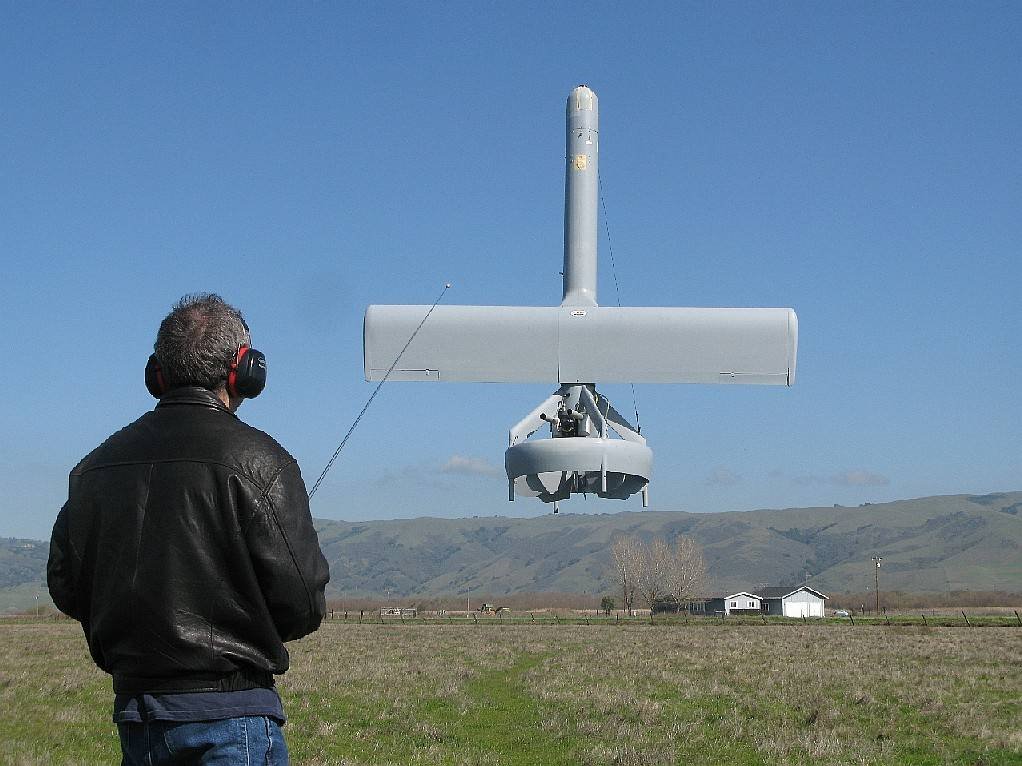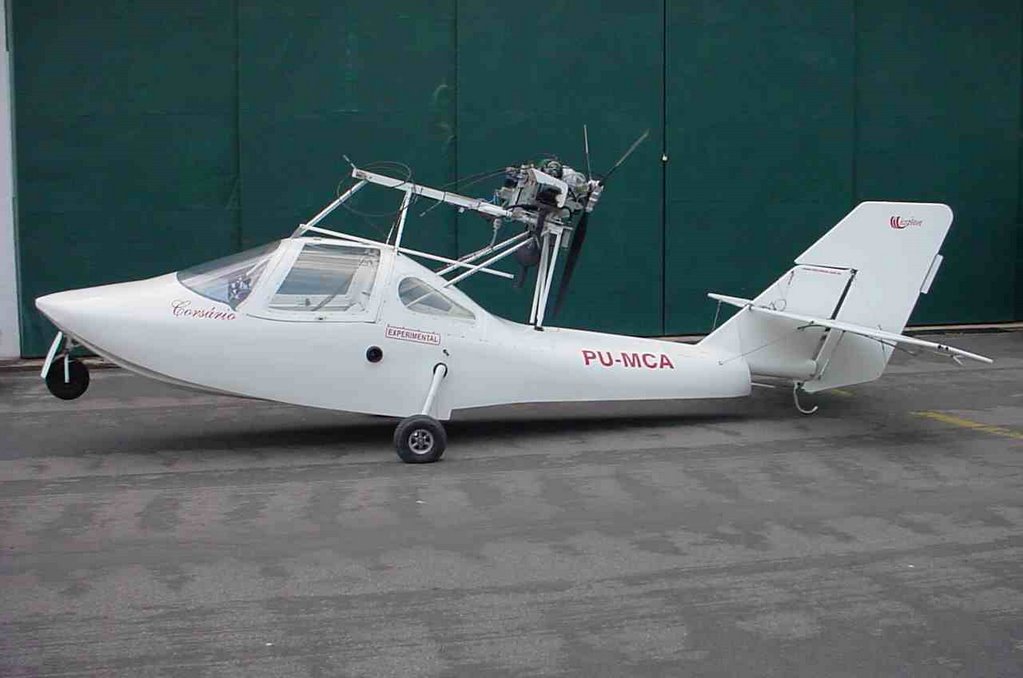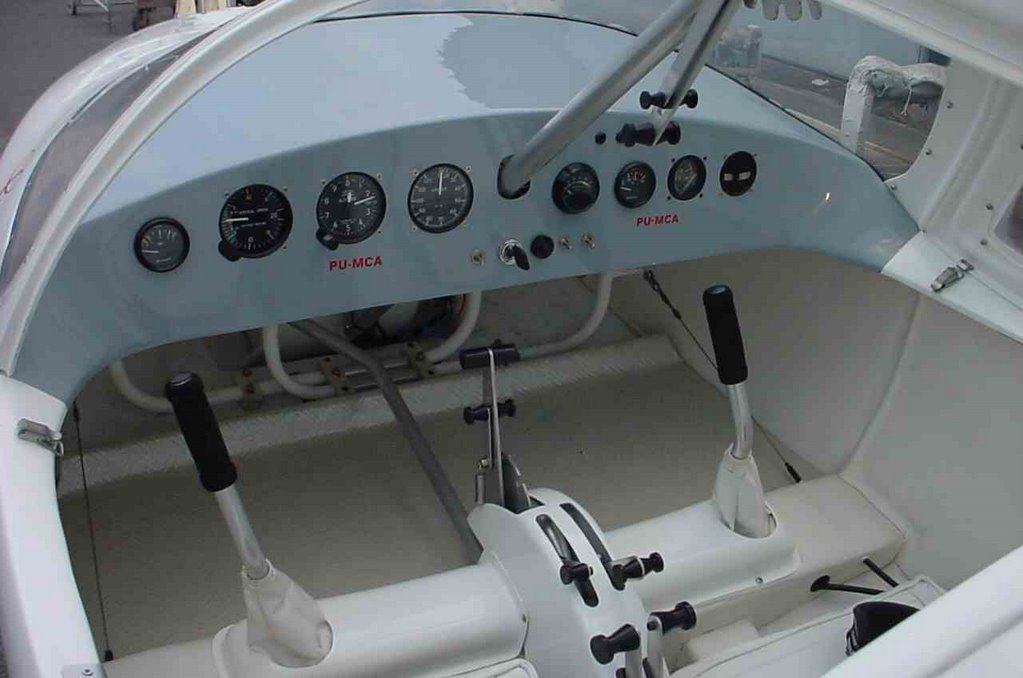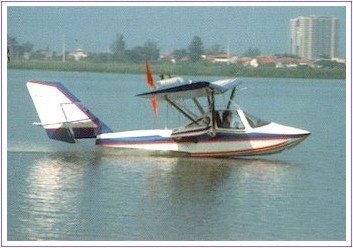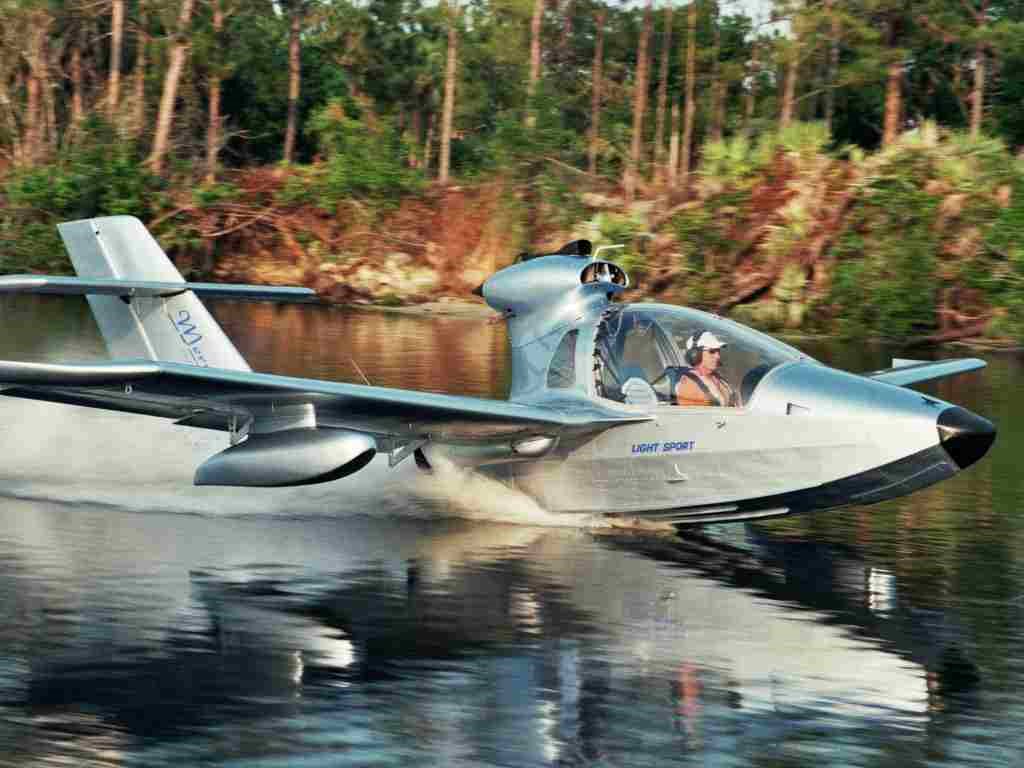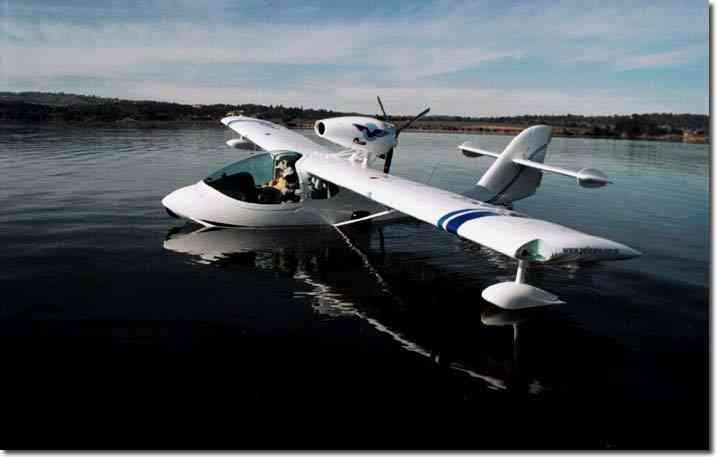Tuesday, March 27, 2007
Generalised Theory of VTOL
This is a description of the theory of operations for VTOL. There is no need for detailed calculations. You may say this is a new technique of utilising intelligence instead of memory/knowledge in order to solve problems. What is required will the logical sequences of decisions that need to be made in order to achieve VTOL.
The control signals required will be in small increments, and checked against the desired conditions. Because we simply use changes instead of amount of changes, and the response does not take into account optimum amounts, we need to adjust the incremental values to as low as possible without affecting response time.
In the RC world, we depend on the quality and performance of the gyros. For manual controls, it depends on the skill of the RC pilots. Since hovering using single tractor propeller aircraft is possible after much practice, RC enthusiasts should be able to design and hover any VTOL aircraft that uses this generalised theory.
We need a total thrust that is more than the weight of the aircraft. The excess will be used to control the aircraft. If it were exactly equal, it can only over at exactly 90 degrees of angle of attack, i.e. perfectly vertical for a single-engined aircraft.
Since I don't like to study the effects of small thrust, let us assume that the excess thrust is more than 50% of the total weight of the aircraft.
The thrust can be distributed at 2 different locations. It can be more, but they can all be grouped(summed) into just 2 positions, the rear and the front. Actually the positions can be anywhere but for practical VTOL designs, they must be located behind the mass centre of gravity, or at/in front of the centre of gravity.
The angle of attack at which the plane will hover depends on the thrust distribution of the front engine. If it were zero, it must be 90 degrees. If it were less, there will be a forward movement. If more, backward.
The front thrust multiplied by its distance from the centre of gavity, will cancel the forward movement, at angle-of-attack of less than 90 degrees, allowing planes to hover at lower angles.
So it is not necessary to hover only at 0 degree. It can hover at 45 degrees, depending on the location and amount of the thrust of the front engine. F35 and Harrier, had made design decisions to achieve 0 degree so the thrusts of the front engines are sufficiently high at its location in front of its CG to achieve hovering conditions.
The front engine need not be controlled. Only the rear engines need be controlled.
We can calculate the thrust distribution in order to achieve the lowest angle of attack for hovering. It may be useful for design and piloting purposes. We can quickly predict the angle of attack at which our plane can hover.
Trying to get the thrust for the front part is the most difficult design decision. For the Su-32 class of aircraft, it should be possible to divert some of the unburned compressed air to the front part, similar to what is done by the pegasus engine of the Harrier. To preserve weight and space, it cannot be diverted too far forward but it must be forwarded to at least its centre of gravity.
Remember that the purpose of this extra complexity is not to achieve hovering or making it easier to control the hovering. It is just as difficult for a zero angle-of-attack hovering. It is only to make it easier to design its landing gear, or for full-scale planes, easier to see the ground and more comfortable to sit.
It is never necessary to have a large thrust for the front engine. If you still want to install a front lift engine, just try to get a small one placed right at the front most part of the aircraft. It can be left on all the time. Hopefully it can reduce the angle of attack during flight and thereby reduce friction due to the extra lift created by this additional lift engine.
Here I describe vectored thrust as though it were jets or ducted fans. Extra large control surfaces within the prop air-stream can be used to divert the thrusts as well, and treated as though it is a rear engine thrust.
For the front thrust effect, we can add additional control surfaces in front of its CG. It can be put there permanently.
Is it worth it just to be able to hover at less than vertical?
I'd like people to experiment with it and have fun.
The control signals required will be in small increments, and checked against the desired conditions. Because we simply use changes instead of amount of changes, and the response does not take into account optimum amounts, we need to adjust the incremental values to as low as possible without affecting response time.
In the RC world, we depend on the quality and performance of the gyros. For manual controls, it depends on the skill of the RC pilots. Since hovering using single tractor propeller aircraft is possible after much practice, RC enthusiasts should be able to design and hover any VTOL aircraft that uses this generalised theory.
We need a total thrust that is more than the weight of the aircraft. The excess will be used to control the aircraft. If it were exactly equal, it can only over at exactly 90 degrees of angle of attack, i.e. perfectly vertical for a single-engined aircraft.
Since I don't like to study the effects of small thrust, let us assume that the excess thrust is more than 50% of the total weight of the aircraft.
The thrust can be distributed at 2 different locations. It can be more, but they can all be grouped(summed) into just 2 positions, the rear and the front. Actually the positions can be anywhere but for practical VTOL designs, they must be located behind the mass centre of gravity, or at/in front of the centre of gravity.
The angle of attack at which the plane will hover depends on the thrust distribution of the front engine. If it were zero, it must be 90 degrees. If it were less, there will be a forward movement. If more, backward.
The front thrust multiplied by its distance from the centre of gavity, will cancel the forward movement, at angle-of-attack of less than 90 degrees, allowing planes to hover at lower angles.
So it is not necessary to hover only at 0 degree. It can hover at 45 degrees, depending on the location and amount of the thrust of the front engine. F35 and Harrier, had made design decisions to achieve 0 degree so the thrusts of the front engines are sufficiently high at its location in front of its CG to achieve hovering conditions.
The front engine need not be controlled. Only the rear engines need be controlled.
We can calculate the thrust distribution in order to achieve the lowest angle of attack for hovering. It may be useful for design and piloting purposes. We can quickly predict the angle of attack at which our plane can hover.
Trying to get the thrust for the front part is the most difficult design decision. For the Su-32 class of aircraft, it should be possible to divert some of the unburned compressed air to the front part, similar to what is done by the pegasus engine of the Harrier. To preserve weight and space, it cannot be diverted too far forward but it must be forwarded to at least its centre of gravity.
Remember that the purpose of this extra complexity is not to achieve hovering or making it easier to control the hovering. It is just as difficult for a zero angle-of-attack hovering. It is only to make it easier to design its landing gear, or for full-scale planes, easier to see the ground and more comfortable to sit.
It is never necessary to have a large thrust for the front engine. If you still want to install a front lift engine, just try to get a small one placed right at the front most part of the aircraft. It can be left on all the time. Hopefully it can reduce the angle of attack during flight and thereby reduce friction due to the extra lift created by this additional lift engine.
Here I describe vectored thrust as though it were jets or ducted fans. Extra large control surfaces within the prop air-stream can be used to divert the thrusts as well, and treated as though it is a rear engine thrust.
For the front thrust effect, we can add additional control surfaces in front of its CG. It can be put there permanently.
Is it worth it just to be able to hover at less than vertical?
I'd like people to experiment with it and have fun.
The future Air Transportation: Vertical Aligned VTOL
Inspired by RC 3D pilots that can hover their planes like helicopters at high angle of attacks.
http://www.rcgroups.com/forums/showthread.php?t=650986#post7121698
This is my final vision of the future of air transportation for civil and military. Not helicopters or horizontally aligned thrust vectored jets such as the F35 Lightning II.
Civil air transportation:(Flying car)
There is no need for a vertical take-off and landing vehicles. Sufficient for an extremely slow stall speeds of less than 20 mph(30km/h), similar to ultralights.
The difference is only in the maximum speed at which a flying car can manage.
Helicopters are never deemed as suitable for personal flying machine. One reason is that it cannot fly fast.
A flying machine with low stall speed is safe. That is why ultralights are limited to a stall speed of 35mph in USA class for experimental aircraft. I put an even lower speed of 20mph which is common among a class of ultralights called trikes. Delta-winged ultralights using weight shifting for its control.
The heaviest ultralights are the amphibious at 300kg empty but can still manage a stall speed of 35mph.
Thanks to these pioneers and the RC world of 3D flying, I believe the future will be a class of flying machines with low stall speed. I would prefer amphibious planes with retractable landing gears. It will allow higher speeds because of its more streamlines shape. Making them amphibious will make it safer.
The wing loading must be even made lower than those achieved by Seamax.
To make it even safer, thrust vectoring or large control surfaces in the prop airstream is essential. It will allow it to be controlled even at extremely low speed.
Low wing loading vehicles are easily affected by wind. Normal human pilots will not be able to handle it. Those RC 3D pilots are a special breed of pilots that train hard to achieve the fine control necessary to fly safely at such low altitudes.
To make it viable, we need advance autopilots. Actually it is not new. Helicopters will not be able to be flown without any gyros. Even RC Helis need gyros to control at least its tail rotor. To a 3D plane, it is the aileron.
To make this technology viable for mass transportation, gyros need to be installed in all axes of control, including its throttle, that means a fly by wire control. If these computer control, humans should still be able to fly them safely but limited to a more open space.
This car will use propellers, either turbo prop or just diesel engines, using the latest combustion techniques to maximise its power while reducing its weight. The thrust to weight ratio of this vehicle must be more than 1.5 in order to maintain a high safety margin for low-speed control, with the added advantage that the vehicle can hover if required.
Hovering is not a necessity. It is better to taxi on normal roads in order to travel to the final destination. It is much safer and economical to do so. Flying is only necessary if we want to travel fast or across terrains that don't have roads, such as across rivers, lakes or seas.
Fold able wings may be necessary if it were to travel along normal roads. The ability to travel on normal roads is a necessity before this vehicle can achieve mass-appeal.
Taking off and landing will require specially modified roads with navigation beacons in order to facilitate traffic control. Traffic control will have to be automated at these special places. The navigation eqiupment need to be advanced as well. More advanced than current ILS. It should be able to take over control over an airplane if required in order to rearrange vehicles that want to take off and land on the roads below. It should be able to control all vehicles, flying and non-flying. This means that all roads need to be upgraded to levels higher than current airports.
Current propulsion systems that consist of reversible-pitch-props with large control surfaces, should be sufficient. Ducted fan with vector controls may be more economical at low speeds but it requires more experimentations.
WE need all these advances in order to realise a dream of the flying cars.
Although all these should be sufficient to make a flying mass-transportation system, it will be desirable to have a hovering vehicle in order to land on roof-tops. Planes landing at high angles of attacks should be feasible with advanced computer controlled systems and gyros. The discomfort due to the vertical alignment of the vehicle should be offset by the greater safety, reliability and performance of the verticle-aligned machines.
I had tried to try experiment with various horizontal-aligned VTOL based on the Terminator 3 movie and other proposals for such devices. Inspired by the cobra moves of the Su-30 and hovering techniques of the 3D RC pilots, I was beginning to consider vertically aligned VTOL with only engines that are optimised for horizontal flight. Initially I thought it will be completely unsafe.
The breakthrough came when in March 2007, I was beginning to realise that vectored thrust can balance a high angle-of-attack plane, to make it hover or move slowly horizontally. Controlling it is so difficult but not impossible, but it is just as difficult to control as any multiple-engine configurations and thrust-vectoring.
The only advantage gained by having thrusts at the front and rear sides, is the ability to hover horizontally, but this means that some engine power need to be sacrificed when flying normally. Just study the F-35 Lightning II. Even Harrier jump jets, sacrifice performance which made it difficult to achieve supersonic speed.
For years, I had tried to place lift engines at the canards of the Su-32 in order to make it VTOL. But I did try to visualise it landing vertically but the elevators will be damaged when it tried to land vertically.
Last night, 26 March, 2007, at about 9PM, Malaysian time, while participating in the discussion in rcgroups forum, I realised that what is needed is just a good landing gear. I suddenly realised that 3D RC planes already have such landing gears.
Of course, for a fighter jet it needs to be retractable. Weight and complexity can be reduced by designing it for low rolling speed. Thrust vectoring can be used to reduce the impact on the front landing gear with the rear landing gears designed to be more like shock aborbers and high friction wheels. Once the rear wheels can take up some weight, the engine nozzle will be adjusted to slow the fall of the front side while giving a reverse thrust.
Achieving zero landing distance will be difficult but this is a small price to pay for military and civilian planes in order to have normal aircraft performances.
For large passenger planes, their many engines should allow them to incorporate vectoring nozzles. It will only become necessary once airports landing distances become limited, or planes become much bigger than A380, probably a triple-decker.
Military VTOL
I predict that the hovering mode of the F35 will be obsolete. Too much compromise on performance. Vertical-aligned VTOL can be fitted to most military aircraft by fitting high thrust vectoring jet engines with sophisticated computerised controls.
The Su32 is already equipped with all-direction thrust vectoring. Its cobra manoeuvres inspired me to consider other possibilities of the thrust vectoring applications. What is need for an Su32 to hover will be just a good pilot, or a good computer control. I believe it is already capable of hovering in mid-air but only for a short time. With practise, their pilots can hover even longer.
I believe it is too dangerous to do so. We need heroes in the RC world to experiment. No life will be lost. Turbines will be more expensive. Brushless electric ducted fans will be cheaper. Gyros can be used to augment pilots' skills. Hopefully, the advent of Nintendo Wii, with its motion detector, will make gyro technology a mass market item, making gyros cheaper and widely known. Hopefully PS3 and XBox360 will introduce motion detection controllers soon.
Another approach is to experiment using simulators first. It will be even cheaper and faster. Many 3D RC pilots practise using RC Flight Simulators. No reason why we can't experiment with VTOL using RC Sims as well.
http://www.rcgroups.com/forums/showthread.php?t=650986#post7121698
This is my final vision of the future of air transportation for civil and military. Not helicopters or horizontally aligned thrust vectored jets such as the F35 Lightning II.
Civil air transportation:(Flying car)
There is no need for a vertical take-off and landing vehicles. Sufficient for an extremely slow stall speeds of less than 20 mph(30km/h), similar to ultralights.
The difference is only in the maximum speed at which a flying car can manage.
Helicopters are never deemed as suitable for personal flying machine. One reason is that it cannot fly fast.
A flying machine with low stall speed is safe. That is why ultralights are limited to a stall speed of 35mph in USA class for experimental aircraft. I put an even lower speed of 20mph which is common among a class of ultralights called trikes. Delta-winged ultralights using weight shifting for its control.
The heaviest ultralights are the amphibious at 300kg empty but can still manage a stall speed of 35mph.
Thanks to these pioneers and the RC world of 3D flying, I believe the future will be a class of flying machines with low stall speed. I would prefer amphibious planes with retractable landing gears. It will allow higher speeds because of its more streamlines shape. Making them amphibious will make it safer.
The wing loading must be even made lower than those achieved by Seamax.
To make it even safer, thrust vectoring or large control surfaces in the prop airstream is essential. It will allow it to be controlled even at extremely low speed.
Low wing loading vehicles are easily affected by wind. Normal human pilots will not be able to handle it. Those RC 3D pilots are a special breed of pilots that train hard to achieve the fine control necessary to fly safely at such low altitudes.
To make it viable, we need advance autopilots. Actually it is not new. Helicopters will not be able to be flown without any gyros. Even RC Helis need gyros to control at least its tail rotor. To a 3D plane, it is the aileron.
To make this technology viable for mass transportation, gyros need to be installed in all axes of control, including its throttle, that means a fly by wire control. If these computer control, humans should still be able to fly them safely but limited to a more open space.
This car will use propellers, either turbo prop or just diesel engines, using the latest combustion techniques to maximise its power while reducing its weight. The thrust to weight ratio of this vehicle must be more than 1.5 in order to maintain a high safety margin for low-speed control, with the added advantage that the vehicle can hover if required.
Hovering is not a necessity. It is better to taxi on normal roads in order to travel to the final destination. It is much safer and economical to do so. Flying is only necessary if we want to travel fast or across terrains that don't have roads, such as across rivers, lakes or seas.
Fold able wings may be necessary if it were to travel along normal roads. The ability to travel on normal roads is a necessity before this vehicle can achieve mass-appeal.
Taking off and landing will require specially modified roads with navigation beacons in order to facilitate traffic control. Traffic control will have to be automated at these special places. The navigation eqiupment need to be advanced as well. More advanced than current ILS. It should be able to take over control over an airplane if required in order to rearrange vehicles that want to take off and land on the roads below. It should be able to control all vehicles, flying and non-flying. This means that all roads need to be upgraded to levels higher than current airports.
Current propulsion systems that consist of reversible-pitch-props with large control surfaces, should be sufficient. Ducted fan with vector controls may be more economical at low speeds but it requires more experimentations.
WE need all these advances in order to realise a dream of the flying cars.
Although all these should be sufficient to make a flying mass-transportation system, it will be desirable to have a hovering vehicle in order to land on roof-tops. Planes landing at high angles of attacks should be feasible with advanced computer controlled systems and gyros. The discomfort due to the vertical alignment of the vehicle should be offset by the greater safety, reliability and performance of the verticle-aligned machines.
I had tried to try experiment with various horizontal-aligned VTOL based on the Terminator 3 movie and other proposals for such devices. Inspired by the cobra moves of the Su-30 and hovering techniques of the 3D RC pilots, I was beginning to consider vertically aligned VTOL with only engines that are optimised for horizontal flight. Initially I thought it will be completely unsafe.
The breakthrough came when in March 2007, I was beginning to realise that vectored thrust can balance a high angle-of-attack plane, to make it hover or move slowly horizontally. Controlling it is so difficult but not impossible, but it is just as difficult to control as any multiple-engine configurations and thrust-vectoring.
The only advantage gained by having thrusts at the front and rear sides, is the ability to hover horizontally, but this means that some engine power need to be sacrificed when flying normally. Just study the F-35 Lightning II. Even Harrier jump jets, sacrifice performance which made it difficult to achieve supersonic speed.
For years, I had tried to place lift engines at the canards of the Su-32 in order to make it VTOL. But I did try to visualise it landing vertically but the elevators will be damaged when it tried to land vertically.
Last night, 26 March, 2007, at about 9PM, Malaysian time, while participating in the discussion in rcgroups forum, I realised that what is needed is just a good landing gear. I suddenly realised that 3D RC planes already have such landing gears.
Of course, for a fighter jet it needs to be retractable. Weight and complexity can be reduced by designing it for low rolling speed. Thrust vectoring can be used to reduce the impact on the front landing gear with the rear landing gears designed to be more like shock aborbers and high friction wheels. Once the rear wheels can take up some weight, the engine nozzle will be adjusted to slow the fall of the front side while giving a reverse thrust.
Achieving zero landing distance will be difficult but this is a small price to pay for military and civilian planes in order to have normal aircraft performances.
For large passenger planes, their many engines should allow them to incorporate vectoring nozzles. It will only become necessary once airports landing distances become limited, or planes become much bigger than A380, probably a triple-decker.
Military VTOL
I predict that the hovering mode of the F35 will be obsolete. Too much compromise on performance. Vertical-aligned VTOL can be fitted to most military aircraft by fitting high thrust vectoring jet engines with sophisticated computerised controls.
The Su32 is already equipped with all-direction thrust vectoring. Its cobra manoeuvres inspired me to consider other possibilities of the thrust vectoring applications. What is need for an Su32 to hover will be just a good pilot, or a good computer control. I believe it is already capable of hovering in mid-air but only for a short time. With practise, their pilots can hover even longer.
I believe it is too dangerous to do so. We need heroes in the RC world to experiment. No life will be lost. Turbines will be more expensive. Brushless electric ducted fans will be cheaper. Gyros can be used to augment pilots' skills. Hopefully, the advent of Nintendo Wii, with its motion detector, will make gyro technology a mass market item, making gyros cheaper and widely known. Hopefully PS3 and XBox360 will introduce motion detection controllers soon.
Another approach is to experiment using simulators first. It will be even cheaper and faster. Many 3D RC pilots practise using RC Flight Simulators. No reason why we can't experiment with VTOL using RC Sims as well.
Monday, March 19, 2007
Tuesday, March 13, 2007
Seamax vs Corsario
Airmax Seamax vs Microleve Corsario. Both are built in Brazil.
Seamax is the faster and cleaner which means better range but Corsario is much cheaper and sells more.
The problem with Corsario is that is is heavier because its wing is too high, probably caused by a larger tail boom.
We may have to wait for the Mk VI version which should look much similar to Seamax and Mermaid in having the wing function as the roof of the cockpit as well. This will allow lighter and roomier amphibious.
A more rigid wing will allow more fuel and less struts which should make it cleaner but cost may rise up. Competition should make it cheaper to own and operate an amphibious ultralight.
Seamax is the faster and cleaner which means better range but Corsario is much cheaper and sells more.
The problem with Corsario is that is is heavier because its wing is too high, probably caused by a larger tail boom.
We may have to wait for the Mk VI version which should look much similar to Seamax and Mermaid in having the wing function as the roof of the cockpit as well. This will allow lighter and roomier amphibious.
A more rigid wing will allow more fuel and less struts which should make it cleaner but cost may rise up. Competition should make it cheaper to own and operate an amphibious ultralight.
Sunday, March 11, 2007
Mermaid vs Seamax
Mermaid costs about RM500,000, from Water Flying
Mar/Apr 2006 Magazie(see my link),
Seamax RM300,000, Avio Riga(see my link).
Both have similar stalling speed, about 36mph.
Seamax is better for sight-seeing because it is a high-wing design, making downward visibility good, and more stable.
Seamax is also light so that even with a 100Hp engine, its takeoff distance is shorter than a 120HP Mermaid.
Mar/Apr 2006 Magazie(see my link),
Seamax RM300,000, Avio Riga(see my link).
Both have similar stalling speed, about 36mph.
Seamax is better for sight-seeing because it is a high-wing design, making downward visibility good, and more stable.
Seamax is also light so that even with a 100Hp engine, its takeoff distance is shorter than a 120HP Mermaid.
Subscribe to:
Posts (Atom)
